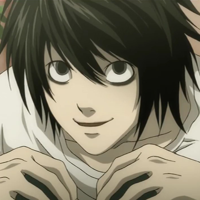Akihito Narihisago тип личности MBTI
Личность
"Какой тип личности является Akihito Narihisago? Akihito Narihisago - это тип личности INTP в mbti, 5w4 - sp/sx - 549 в Enneagram, RCOEI в Big 5, ILI в Socionics."
Hello, I just compared the English and the Japanese show to each other and it seems like some of the Ne in his speech is tossed aside when his lines are translated to English. First of all I'd like to explain Japanese culture on the surface. (I’ll try to explain as simple as I can but please feel free to ask me clarifications) Maybe my first point would be how modern Japanese societal norm culture as a blanket statement is highly attuned to Fe-Ni (imagine unhealthy ENFJ bullying the collective mindset) dynamics- and inferior Ti (people are surprised by this for some reason). Fe-dominant because after WW2, a lot of the cultural reset happened to try and unify the nation because of the severe lost of resources (human and structures) due to the massive bombings. The nation has been broken by the feudal wars that went on for centuries (sengoku era) but the WW2 really awakened patriotism in the Japanese citizen’s mindset. We are forced to keep peace for peace’s sake, a lot of the majority of the population forces us to value harmony. Ni-parent because of how the language is structured-(This distinction began to be made in the post-war era because we had to unite different prefectures and districts effectively) it highly depends on the CONTEXT of the culture that everyone is already involved in, think of the collective unconscious but specific to Japan alone. So that’s why we have this structure in communication that has to establish each and every context of a situation- a situation that a person will have to be involved in throughout their lifetime as they go through life in a linear process: which is birth, (childhood) school system, (young adulthood and maturity) work and then retirement (because long lifespans). The basics are 本音 (hon’ne) which roughly translates to “real intention” behind the words you actually say, 建前 (tatemae) (this is confusing for foreigners because it translates to “building” on Google translate but what it wants to say is “facade”) which is the the behavior and opinions one displays in public to “be proper” (remember, oppressive Fe) and then the usage of 敬語 (keigo) which can be directly translated to “respectful language” (it’s what you hear when they end sentences with “desu”). Because of this, high stack Ti users (I hear this a lot from fellow xxTPs) cannot effectively use sarcasm because the language LITERALLY cannot support it effectively. We have to butcher the structure on our own, and that’s why Se and Ne shortcutting is very easy to distinguish when you can listen to the person’s verbiage: Ne will try to do more word associations of sounds alike (the pun culture here is strong for us NTPs- a good example of this is the whole series of Gintama, created by Sorachi Hideaki an INTP) and Se will follow the structure but abruptly end the sentences with -da, -yo, -su instead of the standard -desu because they are rushing to get their point across since they are still Ni users at the end of the day (they use honne better than most of us, in my experience and I also see it with how STPs talk in anime and is even become an overarching SP theme recently). Okay. Back to Narihisago, the language he speaks is already heavily Ni based, and maybe that’s what the translation is picking up so that might have been what you are picking up. But there is one repeating aspect of Ne-Si that he has put in the series that I think wasn’t carried by the translation. If you remember the recurrence of [ Kaeru-chan ] (カエル vs 帰る) this is actually a very obvious Ne-Si indicator that he leaves for himself to be able to remember the essential parts of his identity so he can trace back his sense of self for every new id he enters. “Kaeru” is not actually the character’s name, as we discover further into the series she’s actually Kiki Asukai, but she appears in almost EVERY episode. This is because “Kaeru” has THREE MEANINGS. The first is the word for “frog” (it’s actually a regular name for girls but the spelling of the characters didn’t indicate a human name) it is in reference to id being a “well” in the mind, so he used this association to a childhood story we all are taught in preschool known as “The Frog of The Well” where a frog knows nothing of the world beyond the well it is trapped in- which is the initial position he is in when he enters a new id. He needs the context to brace himself for every “new” instance so he can fall back to a structure he understands. Second, is the verb “kaeru” ( 帰る) which means “to go (back home)” or “return”, to signal to himself that he needs to revert to his established identity which, he is Narihisago, the great detective and he has a case to solve. Third is the segmentation of ka-e-ru, sounds like a name, he put it as a place holder for the image of her dead body to keep identifying it as a “person I know” and that’s why we are presented her dead body in every id, because it is an Si construct he carries with him to effectively Ne explore every id via Ti.
























